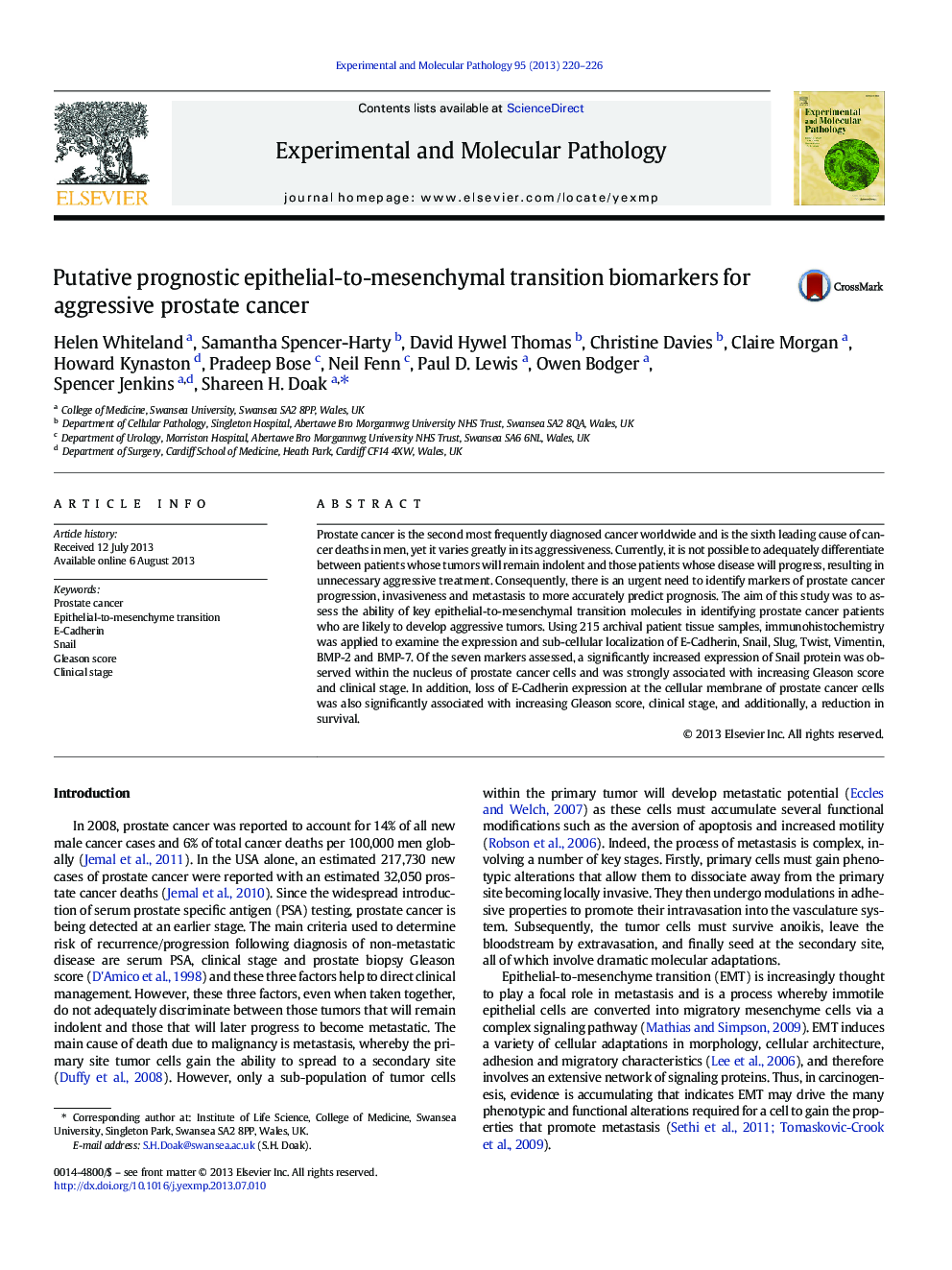| Article ID | Journal | Published Year | Pages | File Type |
|---|---|---|---|---|
| 2775351 | Experimental and Molecular Pathology | 2013 | 7 Pages |
•The expression of EMT biomarkers was analysed in prostate cancer tissues.•Increased Snail expression correlated with high Gleason score and T stage.•E-Cadherin loss was associated with poor prognosis.•Together they may be used within a prognostic biomarker panel for prostate cancer.
Prostate cancer is the second most frequently diagnosed cancer worldwide and is the sixth leading cause of cancer deaths in men, yet it varies greatly in its aggressiveness. Currently, it is not possible to adequately differentiate between patients whose tumors will remain indolent and those patients whose disease will progress, resulting in unnecessary aggressive treatment. Consequently, there is an urgent need to identify markers of prostate cancer progression, invasiveness and metastasis to more accurately predict prognosis. The aim of this study was to assess the ability of key epithelial-to-mesenchymal transition molecules in identifying prostate cancer patients who are likely to develop aggressive tumors. Using 215 archival patient tissue samples, immunohistochemistry was applied to examine the expression and sub-cellular localization of E-Cadherin, Snail, Slug, Twist, Vimentin, BMP-2 and BMP-7. Of the seven markers assessed, a significantly increased expression of Snail protein was observed within the nucleus of prostate cancer cells and was strongly associated with increasing Gleason score and clinical stage. In addition, loss of E-Cadherin expression at the cellular membrane of prostate cancer cells was also significantly associated with increasing Gleason score, clinical stage, and additionally, a reduction in survival.
